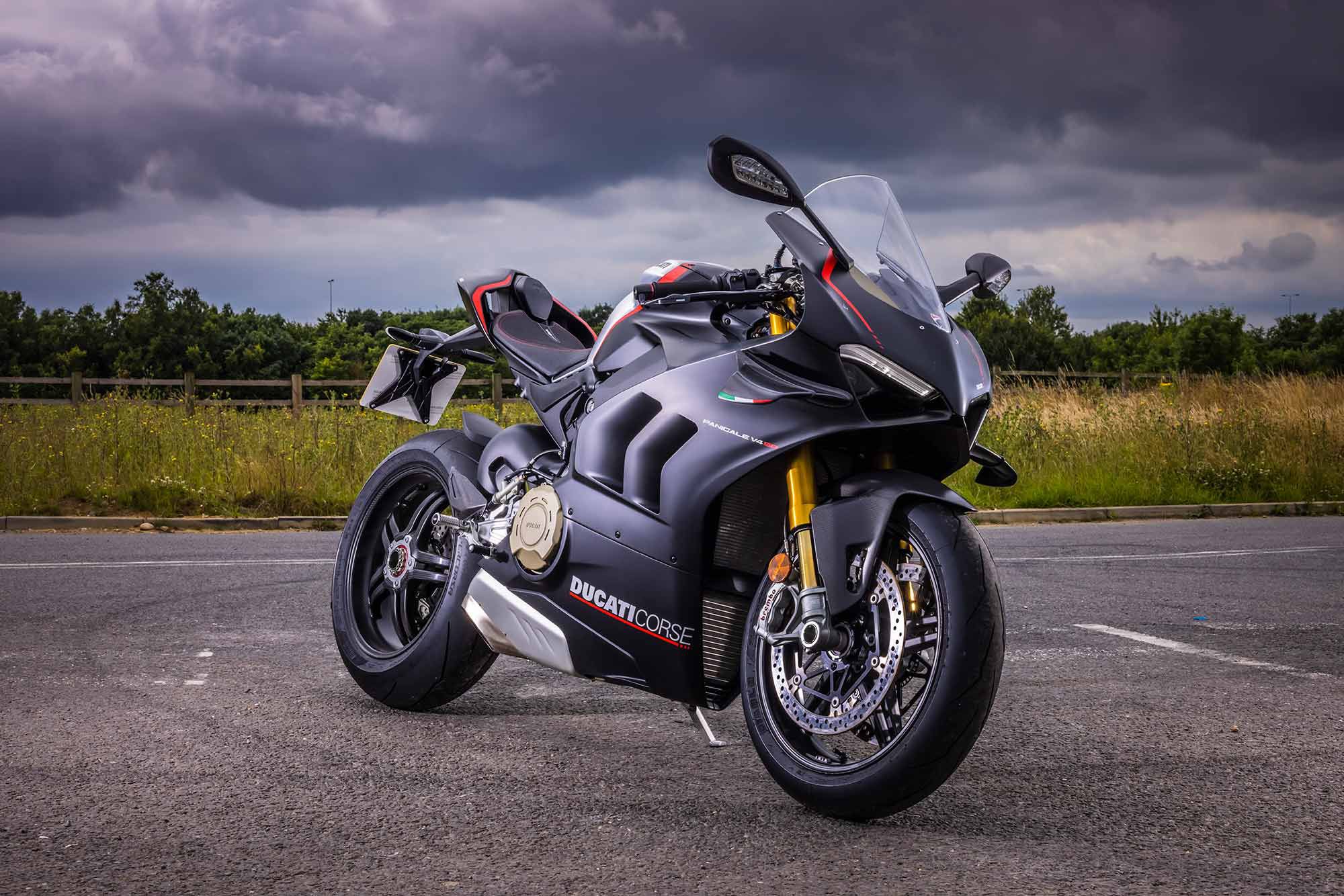
A quick glance inevitably extends to a 30-minute gaze. You can’t help it. Those carbon wheels, that brushed aluminum fuel tank (borrowed from the R-model), Stylema R brake calipers (from the Superleggera) and remote adjustable brake lever suck the air from your lungs and make time stand still. It’s unusual to feel an instant emotional attachment to an object, but it happens with the new Ducati Panigale SP—the easiest superbike on the planet to fall in love with.
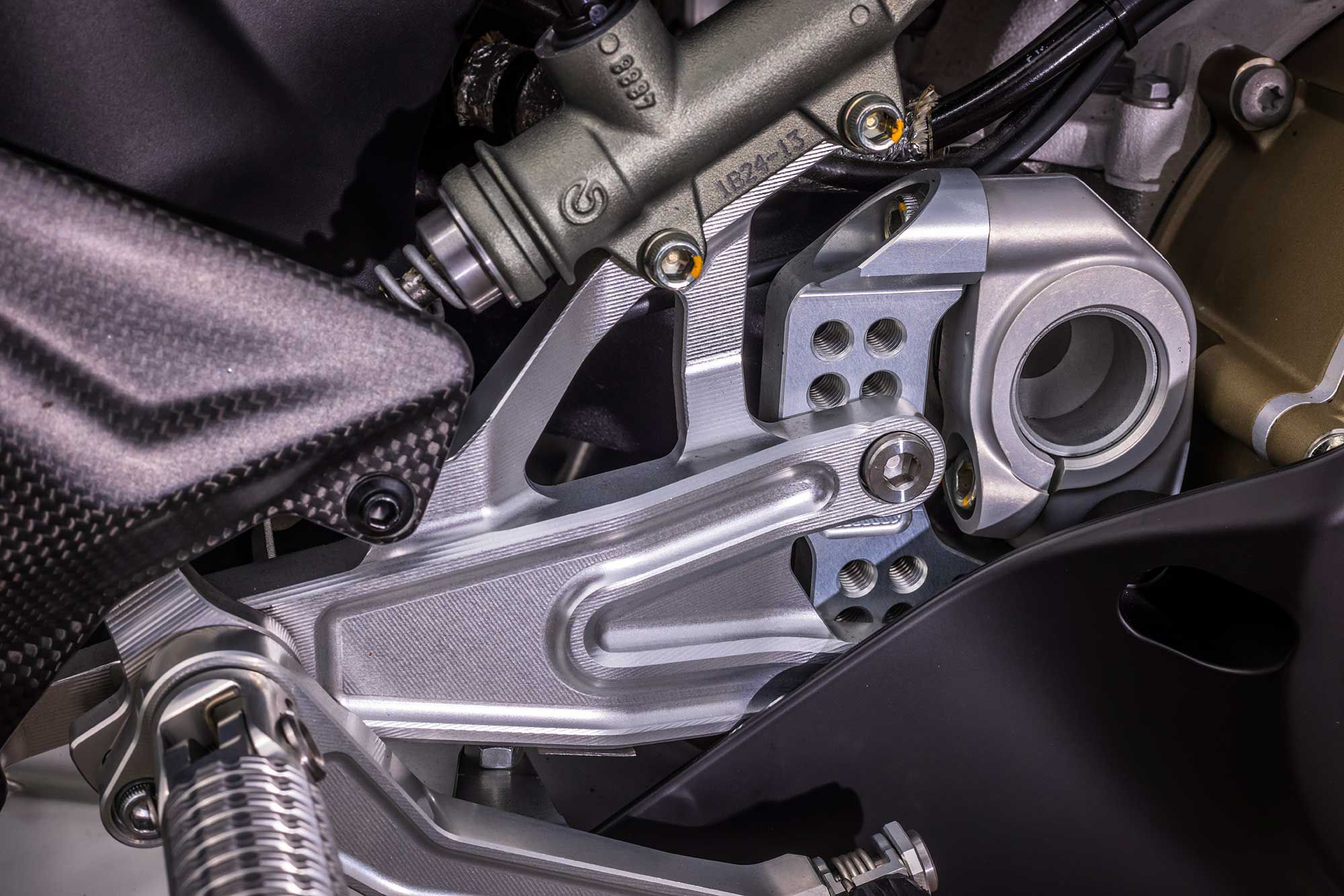
It’s easy to ride blisteringly fast too. Lightweight, five-spoke carbon wheels save 3.1 pounds over the Panigale V4 S and 7.5 pounds over the base-model V4, which represents a massive saving in unsprung weight. The difference isn’t especially noticeable at road-legal speeds but, on track, the SP flicks fluently from knee down left to knee down right. A 1,103cc V-4 shouldn’t be as easy to turn as a lightweight 250, but the SP’s agility and accuracy during fast changes of direction are breathtakingly good.
Related: Motorcycle Reviews And Comparisons
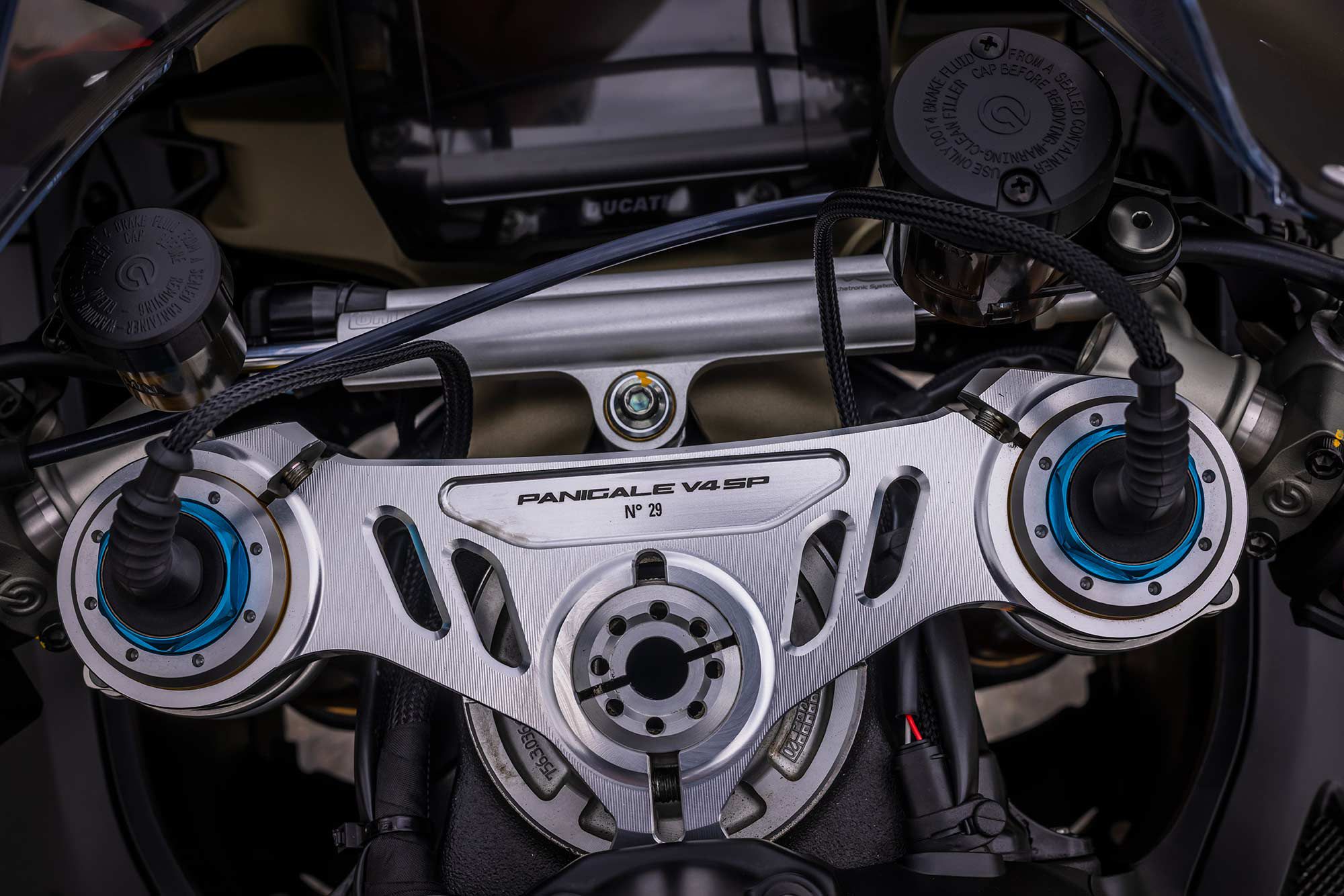
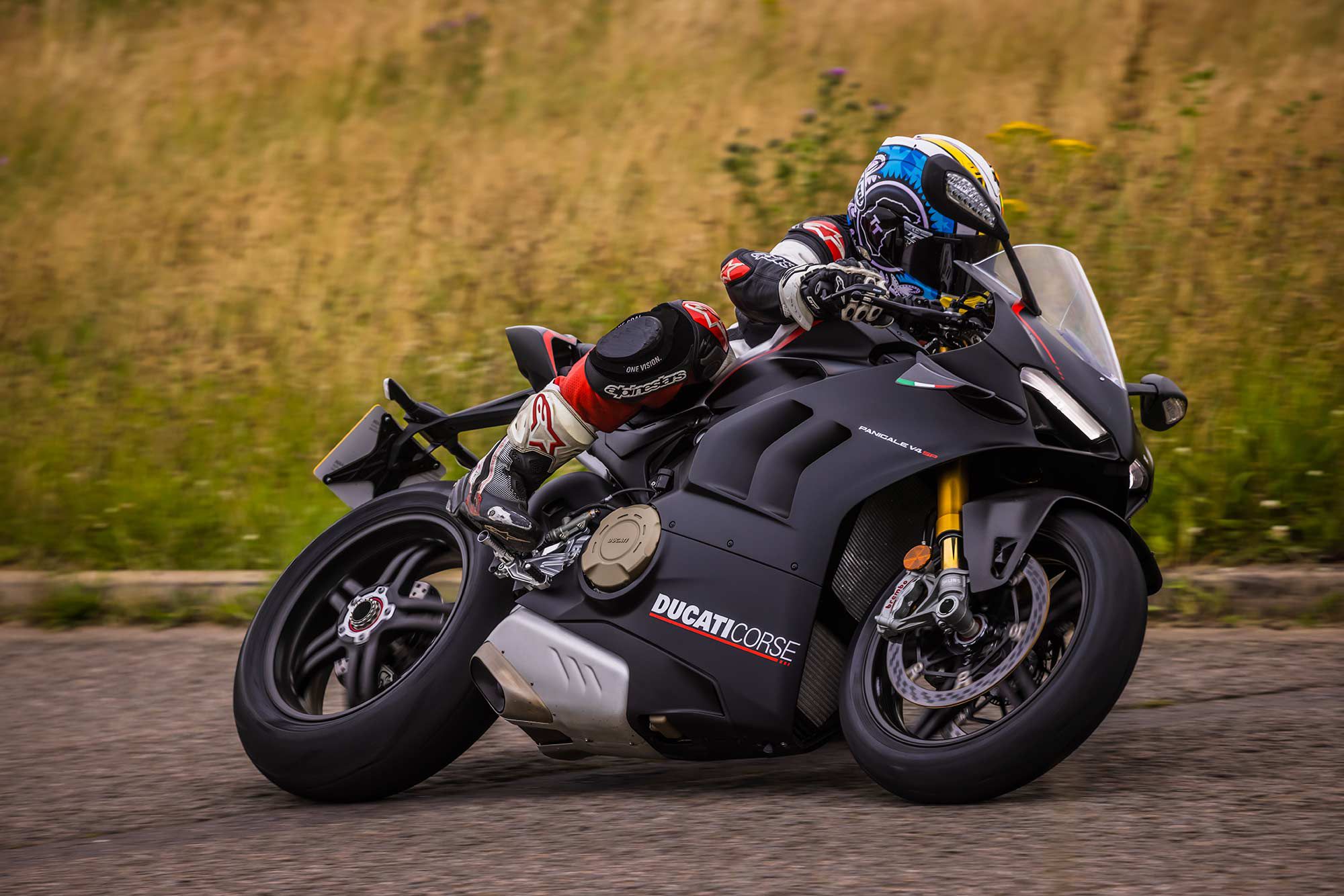
Like the V4 S sportbike, the SP is equipped with electronically controlled (EC) Öhlins NIX 30 fork and a TTX 36 rear shock (even the steering damper is Öhlins Smart EC 2.0), and I found their road settings to be almost faultless. Bumps, high-speed bends, changes in road surface, under hard acceleration—the Öhlins system took it all. Tires are Pirelli Diablo Supercorsa SPs, which in perfect conditions match the bike’s intentions impeccably, though on bumpy backroads I would have liked a little more plushness, especially at low speeds. The SP shares the extraordinary braking setup of the Superleggera, whose Brembo Stylema R front calipers are genuine race-spec and consistently faultless on track. They also have a ridiculously cool remote span adjuster.
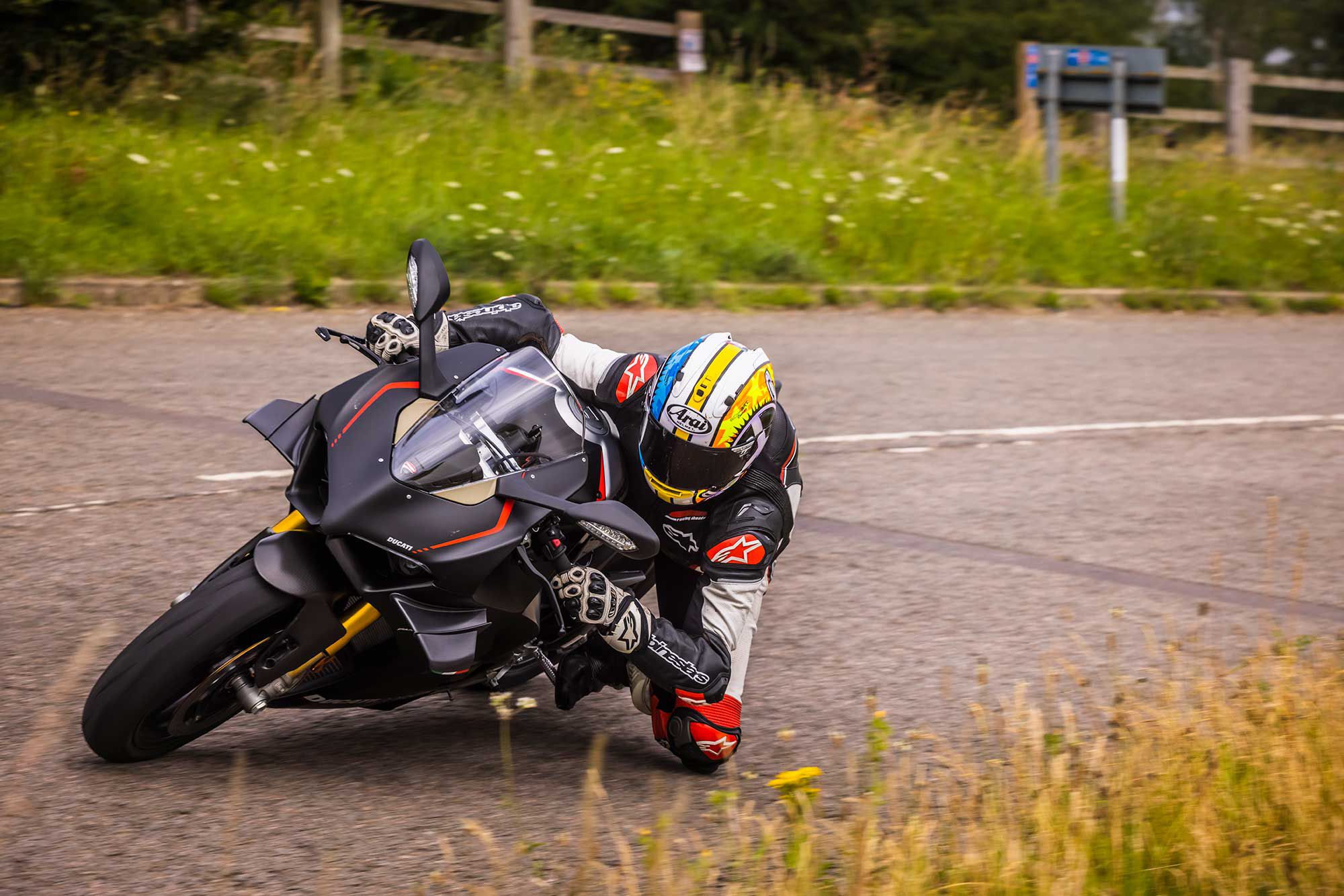
Within just a few miles of stepping aboard the SP I was attacking familiar sections of road with full confidence. Such is the quality of its feedback, I could keep leaning and carry ever more corner speed. In fact, the SP feels full of speed everywhere and instills a belief in its rider that anything is possible, especially with its full suite of market-leading electronic rider aids in support. I can’t remember the last time I rode on the road and had so much knee-down fun in relative safety.
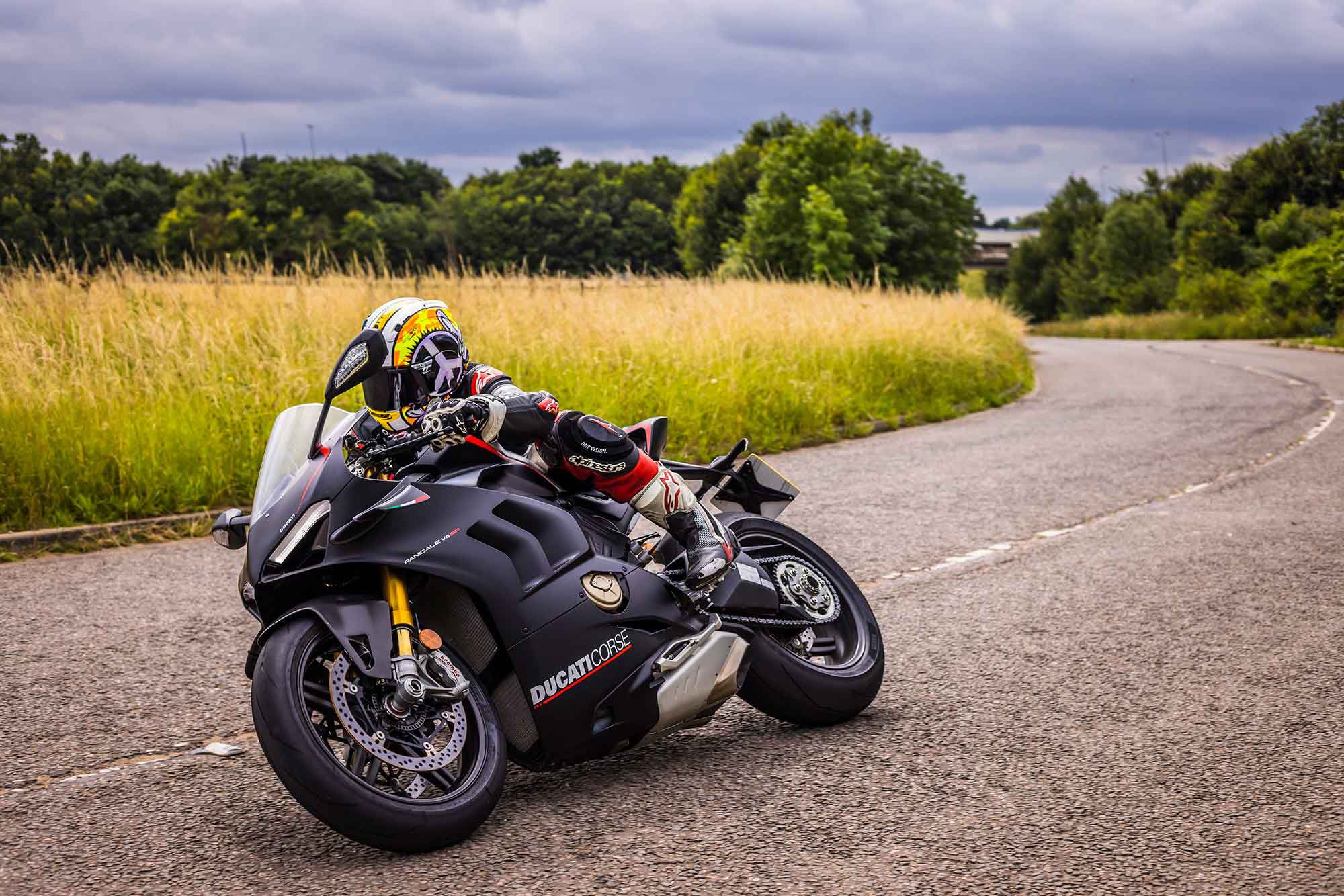
Aside from a new dry clutch, the 1,103cc Desmosedici Stradale 90-degree V-4 remains unchanged, with power output the same as the lower-spec and much-cheaper Panigale V4 and V4S, which were tweaked for Euro 5 this year. Some may be disappointed, but I’ve ridden both of those Panigales extensively on track and never ended a session wishing I’d had more power. On the road, engine performance is almost too much—do you really need more than 200 hp in a lightweight chassis?
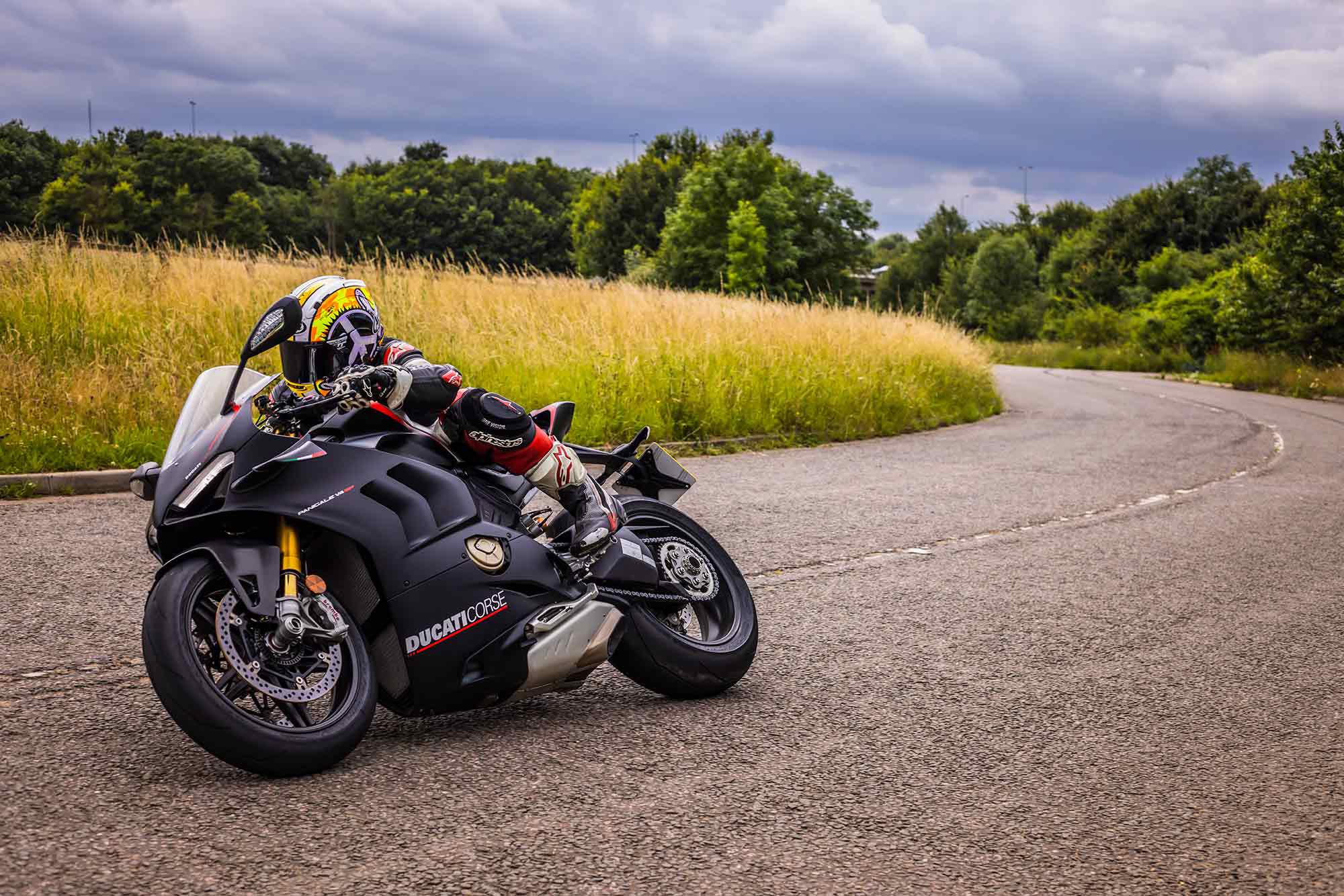
Luckily for us, Ducati has thought of that. There are four simple riding modes: Sport and Street for the road, and Race A and Race B for the track. The factory has also reduced torque in the lower gears in all modes apart from Race A. In fact, it’s only when you flick into Race A that you get the full-flavor SP experience.
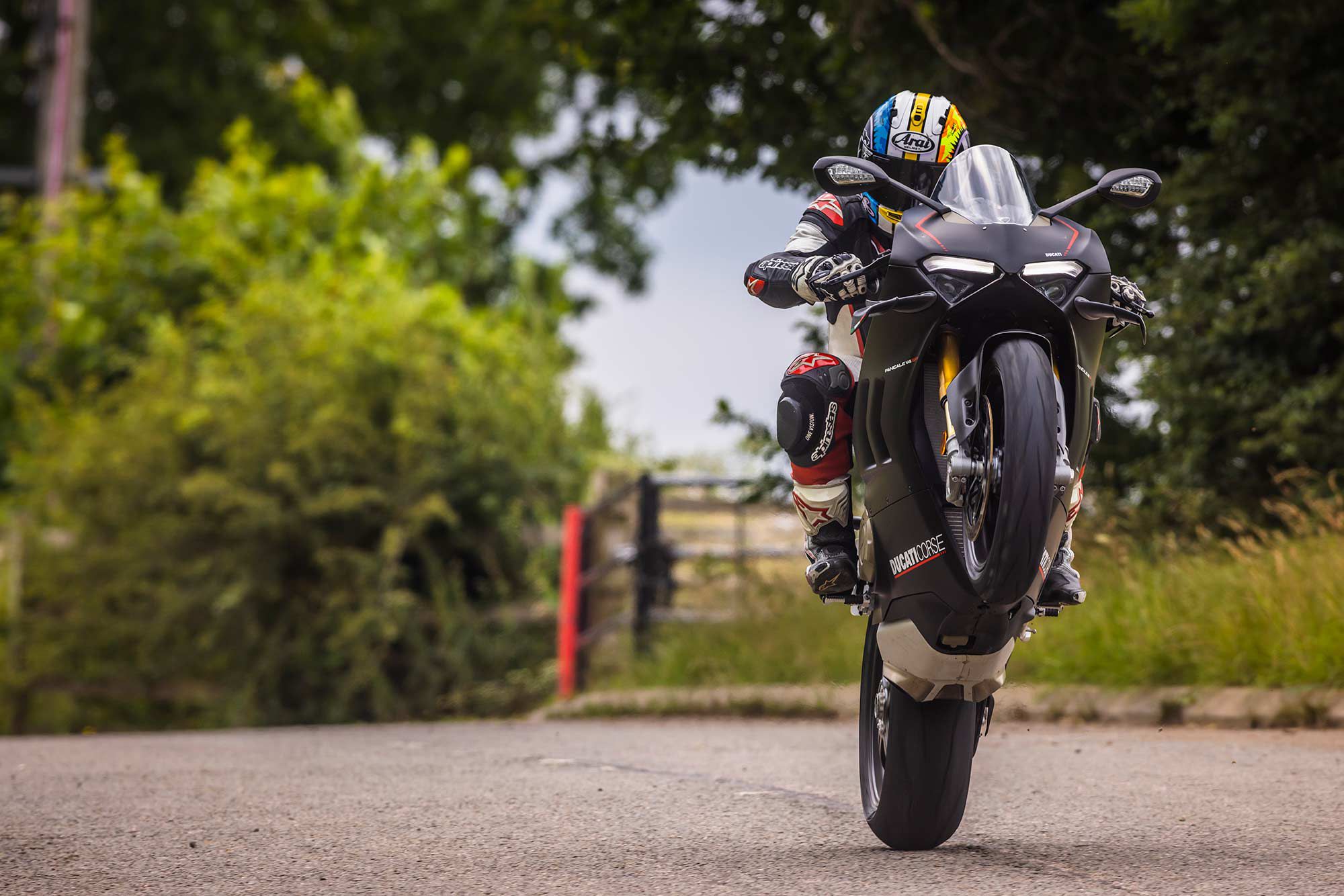
But even in Street mode the SP feels ultrarapid. You think it’s accelerating hard then it just keeps going and going, and revs on to a staggering 14,500 rpm. You’re accelerating so fast that you assume you’re close to the redline—but you’re not. Hold the gear longer, let it rev to the peak power at 13,000 rpm…and it’s mind-blowing. Then nudge the quickshifter and, once you’ve processed the first few gears, you are into full power in fourth gear.
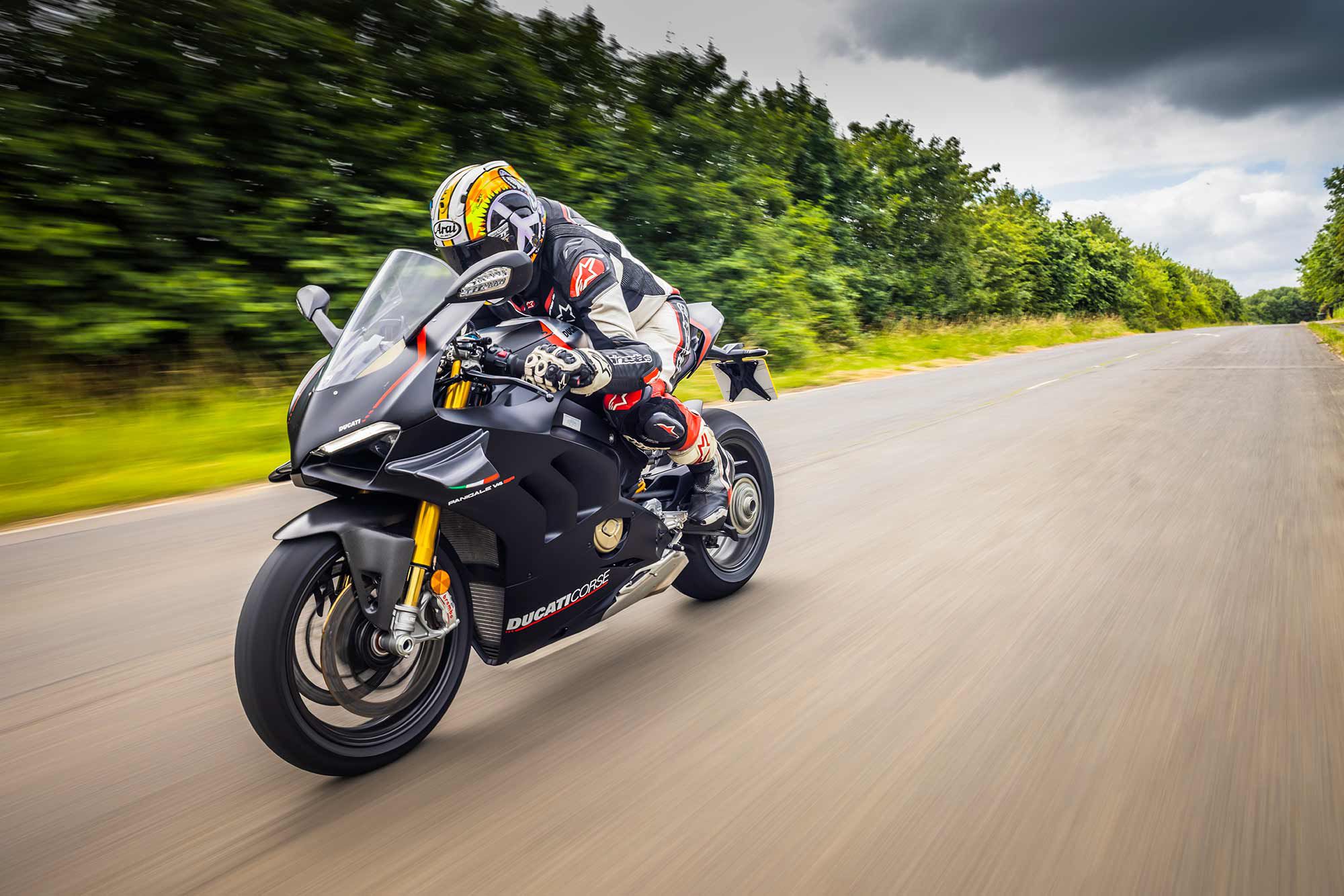
Far from making the SP slower, that torque reduction simply gives the electronic rider aids an easier time. Turn them all off, and the SP becomes a racebike with mirrors—and even those lovely carbon wings can’t control the endless wheelies.
Rider aids are top level—the very latest EVO 3 system—and easy to access and adjust via a 5-inch TFT dash. The electronic toys at your fingertips are EVO cornering ABS and traction control, plus slide, wheelie, engine-brake, and launch control. Not forgetting the up-and-down quickshifter and Öhlins electronic suspension. On track or in less favorable conditions, these rider aids are the Ducati’s ace card, especially for less experienced hands. In the wet, especially on the road, cornering ABS is a godsend.
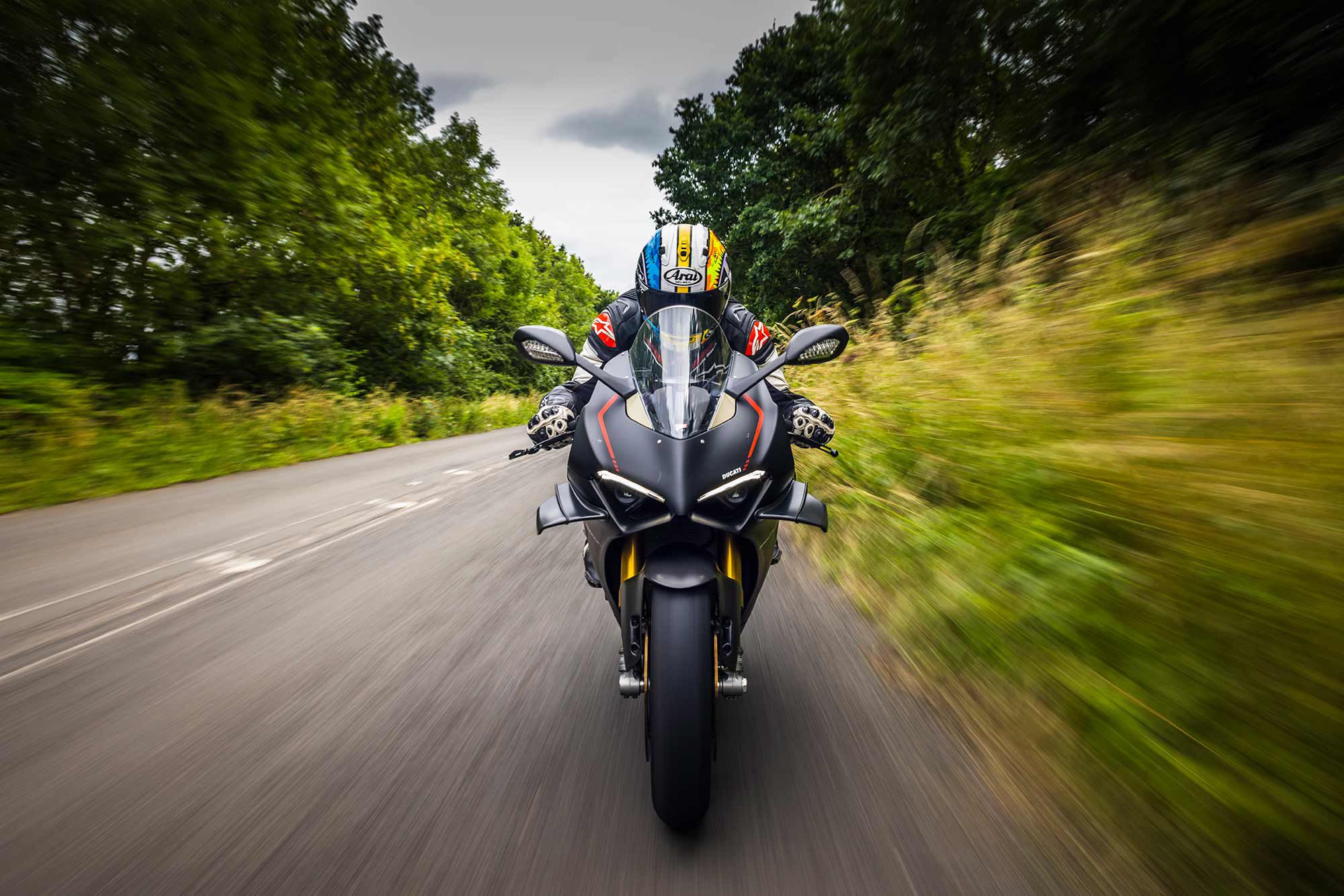
The ergonomics aren’t as bad as you might expect. The SP is one of the roomier superbikes on the market—very un-Ducati-like. In the softest suspension mode, I was pleasantly surprised by the comfort on the motorway. But sadly, that is where the compliments end. The brushed aluminum fuel tank feels and looks lovely but, at only 4.2-gallon capacity, the SP needs fuel every hour or every 80 to 90 miles. Ducati has done everything possible to reduce the heat from the rear cylinders reaching the rider, yet still your inner legs are cooked. The dry clutch is designed for racing and heavier than standard, and it makes neutral harder to find. That said, I should point out that, despite my gripes about everyday life with an SP, I still want one.
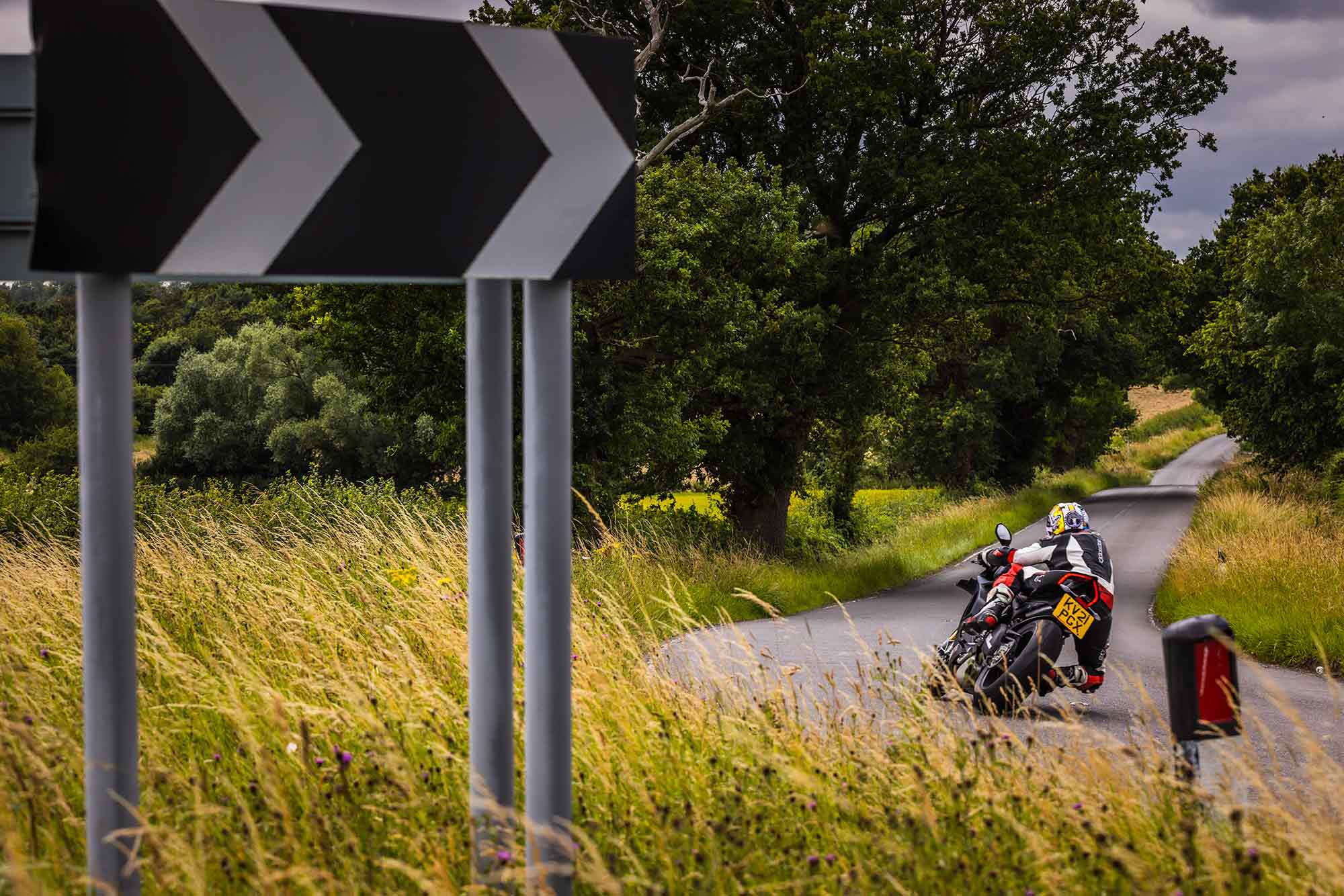
Verdict
It’s incredibly easy to ride incredibly fast, and the handling is extraordinary. I’ll stick my neck out and say that the Panigale SP is possibly the finest-handling roadbike on the market, and certainly in the top three. I love its appeal and exclusivity too. It’s a future classic and, yes, a bike to fall in love with.
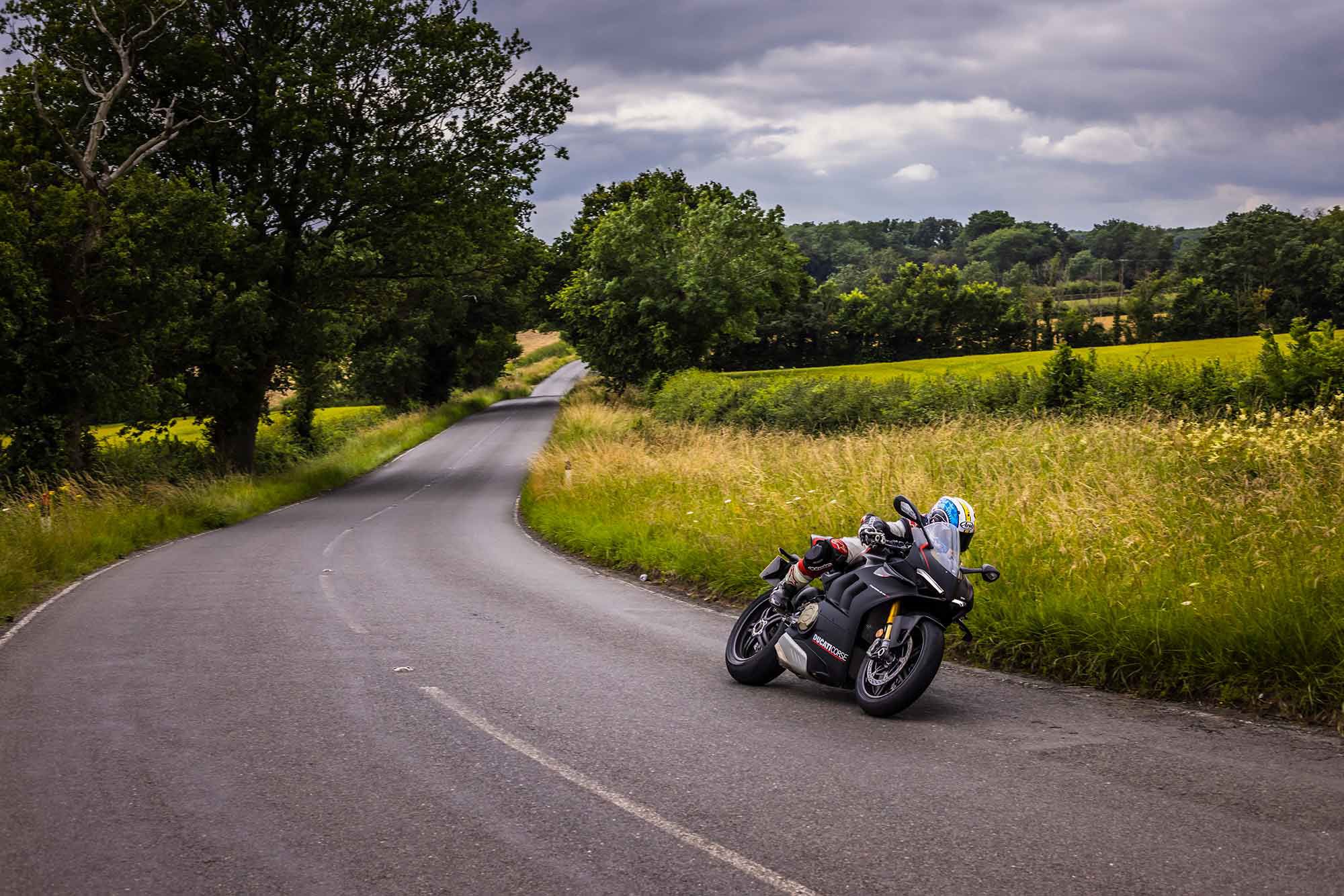
On the road, you don’t need remote span-adjustable levers, carbon wheels, or a limited-edition Winter Test livery—nor the bike’s number machined onto the headstock. But if you had the money, you would, and I can tell you want one… I, for one, don’t care too much about the tank range, and I’ll not bother with neutral at the lights. If my legs are burning, who cares? Just look at it. If kids still put up posters, it would be of this: a very special motorcycle I did not want to give back.
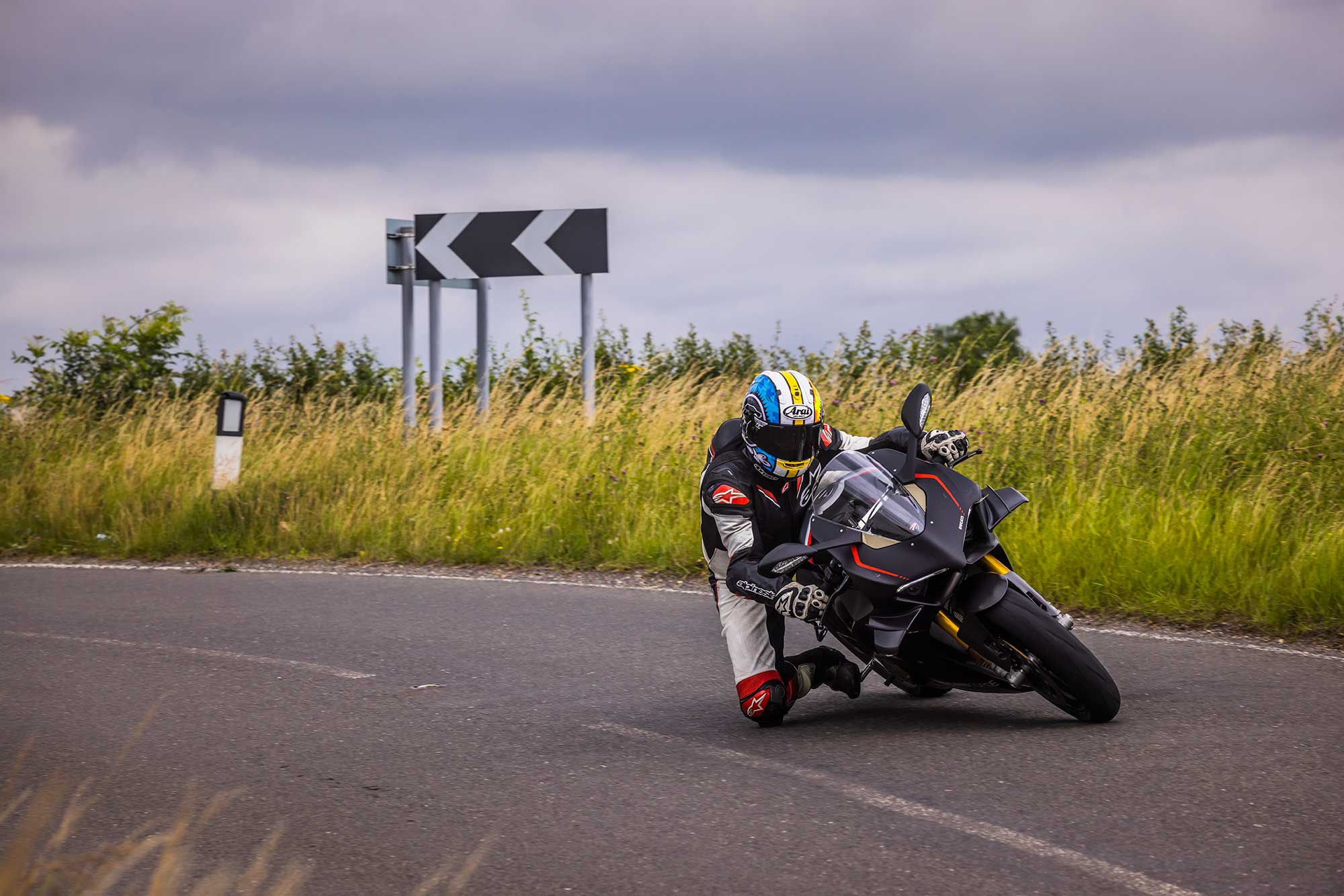
2022 Ducati Panigale SP Technical Specifications and Price
| PRICE | $37,000 (£32,295) |
| ENGINE | 1,103cc, liquid-cooled 90-degre V4; 4-valves/cyl. |
| BORE x STROKE | 81.0 x 53.5mm |
| COMPRESSION RATIO | 14.0:1 |
| FUEL DELIVERY | Fuel injection, ride-by-wire |
| CLUTCH | Dry, multiplate slipper/assist |
| TRANSMISSION/FINAL DRIVE | 6-speed/chain |
| CLAIMED HORSEPOWER | 211 bhp @ 13,000 rpm |
| CLAIMED TORQUE | 91.5 lb.-ft. @ 9,250 rpm |
| FRAME | Aluminum front frame |
| FRONT SUSPENSION | Fully adjustable, Öhlins NIX 30 43mm inverted fork; 4.7 in. travel |
| REAR SUSPENSION | Fully adjustable Öhlins TTX 36; 5.1 in. travel |
| FRONT BRAKE | Brembo Monoblock Stylema R 4-piston caliper, dual 330mm discs w/ Cornering ABS |
| REAR BRAKE | Brembo 2-piston caliper, 245mm disc w/ Cornering ABS |
| WHEELS, FRONT/REAR | Carbon; 17 x 3.50 in. / 17 x 6.00 in. |
| TIRES, FRONT/REAR | Pirelli Diablo Supercorsa SP; 120/70-17, 200/60-17 |
| RAKE/TRAIL | 24.5°/3.94 in. |
| WHEELBASE | 57.8 in. |
| SEAT HEIGHT | 32.9 in. |
| FUEL CAPACITY | 4.2 gal. |
| CLAIMED CURB WEIGHT | 427 lb |
| WARRANTY | 2 years, unlimited mileage |
| CONTACT | ducati.com |
Source: MotorCyclistOnline.com
